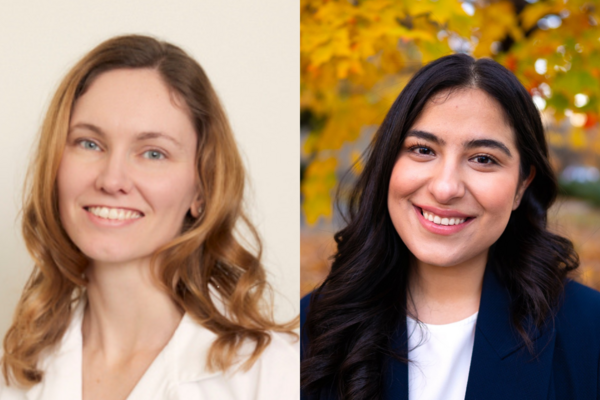Mobile Menu
- Education
- Research
-
Students
- High School Outreach
- Undergraduate & Beyond: Community of Support
- Current Students
- Faculty & Staff
- Alumni
- News & Events
- Giving
- About

A new study from the University of Toronto has found that among patients with a diabetes-related eye condition, those who are male, Black or Hispanic, or living further away are more likely to be lost to follow-up, putting them at greater risk of vision loss.
By identifying key risk factors, the research can inform strategies to help retain patients in care and better manage their diabetic retinopathy, the most common cause of vision loss for people with diabetes.
Diabetic retinopathy is caused by high blood sugar damaging the retina and affects an estimated one in four Canadians with diabetes. Over time, it can lead to complications like abnormal blood vessel growth and diabetic macular edema, where blood vessels in the retina leak fluids — both of which can cause vision loss. Therapies for diabetic retinopathy aim to prevent vision loss by stopping blood vessel growth and reducing leakage in the retina, either with laser treatment or direct injection of medicines called anti-VEGF drugs into the eye.
“For both treatments, you need consistent treatment and follow-up,” says study first author Ryan Huang, a third-year medical learner at U of T’s Temerty Faculty of Medicine.
Under the mentorship of Marko Popovic, a medical retina specialist at Unity Health Toronto’s St. Michael’s Hospital, Huang teamed up with retina specialists Radha Kohly and Rajeev Muni to investigate the sociodemographic and clinical factors associated with being lost to follow-up.
Kohly is a medical retina specialist at Sunnybrook Health Sciences Centre while Muni is vitreoretinal surgeon at St. Michael’s Hospital. Both are associate professors of ophthalmology and vision sciences at Temerty Medicine.
For the study, which was published in JAMA Network Open, the researchers analyzed electronic medical record data for 2,961 patients treated by Kohly and Muni from January 2012 to December 2021. Patients were classified as lost to follow-up if they received a treatment but did not return to see their specialist in the one-year period following their last appointment.
“We found that 17 per cent of patients were lost to follow-up over the 10-year study period,” says Huang.
Of those, 41 per cent were permanently lost to follow-up — meaning they never returned to the clinic — and 54% came back at some point after one-year period.
The researchers found that patients who are male or Hispanic were 20 to 50 per cent more likely to be lost to follow-up while Black patients were twice as likely to have a significant gap in care. Compared to patients who lived within 20 kms of the treatment centre, those who lived further away were at higher risk of being lost to follow-up, with the likelihood increasing as the distance grew.
Interestingly, patients with worse vision at baseline or diabetic macular edema were less likely to be lost to follow-up.
“These patients with more severe disease require more intensive treatment regimens and this may incentivize them to pursue regular follow-up because they’re seeing the greatest improvements in their vision,” says Huang.
The researchers also found that patients who received laser treatments were more likely to miss follow-up appointments than those who received the anti-VEGF drug injections. Huang notes that because the effects of laser treatments are longer lasting, patients may not feel the need to return to the clinic. However, by skipping follow-up care, they may be at higher risk of developing worsening vision later on.
“Monitoring is absolutely necessary to preserve their long-term vision,” he says.
Preliminary results from their ongoing work shows that for patients who were temporarily lost to follow-up, their vision was significantly worse when they returned to the clinic to resume treatment. While patients who received laser treatments saw their eyesight return to pre-treatment levels, those treated with anti-VEGF injections never fully regained their vision after restarting follow-up care.
“If you have a patient who is at high risk of being lost to follow-up based on the characteristics we’ve identified, you may choose laser treatment since they’re more likely to obtain a full recovery in their vision,” says Huang.
The findings were recently presented at the Canadian Ophthalmological Society annual meeting.
In addition to highlighting the importance of follow-up care in managing diabetic retinopathy, the researchers also suggest several approaches to prevent patients from being lost to follow-up. These include using automated text messages and phone calls as reminders for upcoming appointments, creating culturally and linguistically tailored patient education resources, and coordinating appointments with transportation services to make it easier for patients who live farther away.
“This is an ophthalmology study, but we believe it’s widely applicable to all chronic diseases that require regular follow-up and management,” says Huang.

